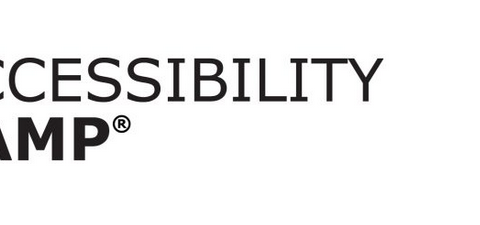On September 18-19, 2018 the W3C is organizing in Tokyo (Japan) a Workshop on Digital Publication Layout and Presentation (from Manga to Magazines).
At the request of the W3C, Samuel Petit (Actialuna / Sequencity CEO), Florian Dupas (Kwalia CEO) and Laurent Le Meur (EDRLab CTO), who participate to the EDRLab BDCoMa WG, have prepared the following Position Paper and will participate to this workshop.
About EDRLab and its BDCoMa WG
The European Digital Reading Lab (EDRLab) is a development lab whose aim is to deploy a set of open and interoperable digital publishing technologies in Europe, around an open, flexible and accessible standard applicable to all kinds of digital publications. EDRLab is member of the W3C and a major contributor to the future Web Publications (WP) / EPUB 4 standards.
In June 2017, EDRLab gathered several actors linked to the comics industry to discuss their needs respective to the digital publishing of visually-rich stories. Spanning the whole spectrum from publishers to developers of authoring tools, reading systems and digital platforms, including authors and public libraries, all stakeholders agreed on the following observations and issues, which led to the creation of the BD Comics Manga Working Group (BDCoMa WG) and the definition of specific goals.
In practice, the BDCoMa WG aims to pursue the constant, long-term effort started in 2013 by former IDPF members in the framework of regular conferences (Frankfurt, IDPF BEA, EPUB Summit…) and the first IDPF Workshop on Sequential Art held in 2014.
Observations: a booming but fragmented market
Although the ebook market grows at different rates – and has therefore reached different levels of maturity – in different parts of the world, regional ebook markets are formally similar and essentially rely on “homothetic” publications produced in the EPUB 2 or EPUB 3 format, i.e. digital reproductions of the paper book equivalents without any form of enrichment. By contrast, the visual narrative market grows extremely fast but remains split into multiple local markets.
- In Japan, the digital manga market is mainly homothetic and EPUB-based, accounting for about 50% of the whole 3.5B€ manga market.
- In the US, digital publications represent an estimated 17% of all comics and graphic novel sales (10% by title + 7% by subscription). The market is dominated by ComiXology (Amazon) and other subscription-based publisher platforms relying on a proprietary format.
- The 500M€ French-Belgian market has not yet reached the milestone of a 2% conversion rate from print to digital. Authors mostly publish natively digital comics on free platforms, sometimes still Flash-based.
- In South Korea, the successful monetization of webcomic blogs spurred the growth of the “webtoon” market which, after less than 10 years, is now estimated to have the same value as the French-Belgian one. The webtoon revolution is currently spreading to Japan, China and the rest of South Asia, but also the US, absent any efforts to standardize the format.
It should be noted that some large-scale digital productions – produced in non-EPUB formats – have already gained major recognition, as evidenced by both international awards (International Angouleme Festival, Eisner Awards, Apple Design Awards…) and sale figures, with numbers going up to several million copies.
Issues: a lack of standardization
- The weight of proprietary solutions implies that readers are mostly captive to the digital platforms where they choose to buy and read comics. Nothing guarantees that the situation will remain the same in the coming years, especially since publishers do not necessarily benefit from keeping exclusive relationships with specific digital platforms, and sometimes even refuse to publish major intellectual properties on them.
- There exists no technical standard for expressing the variety of visual narratives (comics, manga, bande dessinée, webtoons and other scroll-based comics, turbomedia, etc.) in a digital form, which effectively accounts for the weight of proprietary solutions. The EPUB format does not seem to have met the needs of both authors and publishers so far, with the exception of homothetic digital manga in Japan.
- After 25 years of experimentations in the field of digital creation, we now have a large enough body of use cases to define precisely what needs should be met and draw a line between what can be standardized and what must remain out of scope.
Goals
Based on the above, EDRLab formed the BDCoMa WG to propose a standard, universal language for expressing digital graphic stories with 4 very clear objectives:
- The very first main goal is to ensure publishers and authors that the visual experience they want readers to have will be perfectly rendered to them;
- Allow publishers to industrialize the creation of simple to visually complex digital comics by drastically diminishing their production costs;
- Favor the production and distribution of publications and associated metadata on the greatest possible number of platforms and make them accessible via the greatest possible number of devices (including Readium based reading applications);
- Ensure that publications can be sold and read forever, independently of the evolution of software technologies.
Guiding Principles
To do so, the BDCoMa WG made 2 core technical choices:
- The format for digital comics needs to build on existing standards. The work being carried out on Web Publications and EPUB 4 will represent a huge achievement for standardized digital publications. It already provides answers to many issues facing a publisher willing to express their works in a digital language. The format for digital comics should therefore be seen as an extension of WP/EPUB 4 dedicated to visually-rich documents beyond Fixed-Layout EPUB.
- The format needs to rely on a declarative approach. This way, it is up to the reading device to implement its own reading software, which ensures that the evolution of technologies in general and computer languages in particular does not make it impossible to read a document in the future. Only reading systems will need to be maintained with backward compatibility in mind, not the publications themselves.
Output
This explains why the BDCoMa WG will refer to the format for which it established a number of specifications as an “EPUB 4 for comics”. Technically, it consists in an EPUB package containing a JSON file describing the story, a few HTML files and a number of separate resource files (images, video, audio, text, etc.).
Besides the short-term needs for the digital expression of visual narratives, the BDCoMa WG believes that those specifications will also be useful to other forms of rich publications: audiobooks, picture books, cookbooks, poems, magazines, educational materials, etc. The format could even be the basis for open source slideshow presentations.
W3C Tokyo Summit Presentation
We therefore propose:
- to describe the scope of the BDCoMa WG’s work, meant to meet the needs that the group identified based on specific use cases;
- to present an introduction to the specifications that the WG developed and detail the roadmap established with the official support of international publishers;
- to showcase innovative technologies and prototypes currently being developed at different levels of the book chain industry, from authoring tools to reading engines;
- to discuss the BDCoMa WG’s technical choices with the variety of attendees (W3C members, publishers, industrial partners…), in particular the possibly controversial implications of a declarative approach.












 contact@edrlab.org
contact@edrlab.org +33 1 83 64 41 34
+33 1 83 64 41 34
